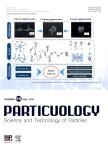Thermal energy storage:Challenges and the role of particle technology
Thermal energy storage:Challenges and the role of particle technology作者机构:Institute of Process EngineeringChinese Academy of Sciences School of Chemical EngineeringUniversity of BirminghamBirmingham B152TTUK East China University of Science & Technology School of Mechanical EngineeringUniversity of Science & Technology Beijing
出 版 物:《Particuology》 (颗粒学报(英文版))
年 卷 期:2014年第12卷第4期
页 面:2-8页
核心收录:
学科分类:080702[工学-热能工程] 08[工学] 0817[工学-化学工程与技术] 0807[工学-动力工程及工程热物理] 0805[工学-材料科学与工程(可授工学、理学学位)] 0703[理学-化学] 0702[理学-物理学]
基 金:supported by a Focused Deployment Project of Chinese Academy of Sciences(KGZD-EW-302-1) Key Technologies R&D Program of China(No.2012BAA03B03) UK EPSRC under grants EP/F060955/1 and EP/L014211/1
主 题:Thermal energy storageComposite materialsStructure property relationshipsRole of particle technology
摘 要:Thermal energy is at the heart of the whole energy chain providing a main linkage between the primary and secondary energy sources. Thermal energy storage (TES) has a pivotal role to play in the energy chain and hence in future low carbon economy. However, a competitive TES technology requires a number of scientific and technological challenges to be addressed including TES materials, TES components and devices, and integration of TES devices with energy networks and associated dynamic optimization. This paper provides a perspective of TES technology with a focus on TES materials challenges using molten salts based phase change materials for medium and high temperature applications. Two key challenges for the molten salt based TES materials are chemical incompatibility and low thermal conductivity. The use of composite materials provides an avenue to meeting the challenges. Such composite materials consist of a phase change material, a structural supporting material, and a thermal conductivity enhancement material. The properties of the supporting material could determine the dispersion of the thermal con- ductivity enhancement material in the salt. A right combination of the salt, the structural supporting material, and the thermal conductivity enhancement material could give a hierarchical structure that is able to encapsulate the molten salt and give a substantial enhancement in the thermal conductivity. Understanding of the structure-property relationships for the composite is essential for the formulation design and fabrication of the composite materials. Linking materials properties to the system level performance is recommended as a key future direction of research.



